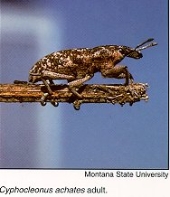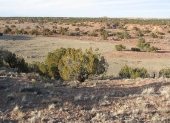A few observations - wow, you are in a harsh environment for fruit trees. I like the hugel idea but don't know how effective the juniper will be as I have seen a lot of fence posts crafted from such wood - resistant to rot - and therefore maybe not a good future super nutrient pump for your trees. Other species avail?? Aspen, etc? I know there a lot of them growing at the base of Mt Graham

!!!
Water - I would certainly make earth-shaping plans to catch and store water. Great idea esp if you have the equip to do the work. The young trees will need supplemental water during establishment for the first few years - think 5-10 gals per day per tree with your sandy soil. Lots of work to do by hand, but if are able, good luck! But since you have a well, I would seriously consider an irrigation scheme of some type...
I know it is not totally 'permacultury', but here is what I have done re water. I am in zone 3 northern plains (MT), semi-arid, and have about 3 dozen fruit trees (future food forest in training). Around most of them I have what is called a mini sprinkler that irrigates about 10-12' (diameter) around each tree. These sprinklers are very low volume and run on a cheap hose timer at night to minimize evap loss. The trees are also heavily mulched and interplanted with a wide variety of beneficial companions (n fixer, compost/mulch plants, beneficial insect attracting plants, etc.) which would not be possible to grow without the mini sprinklers. The total amount of water per tree is not huge but the mulch holds the water in, allowing the companions to survive, and the continiual re-wetting of the mulch helps the decomposers to break it down into soil much faster. The only negative is the up front cost, which although not great, is nonetheless another cost to consider. So that is what I am doing. If I only had a backhoe...no, wake up, someone please stop me before my wife gets home!!!
Best of luck and hopefully we will both be imbibing some fine homemade cider.
Bill







 !!!
!!!